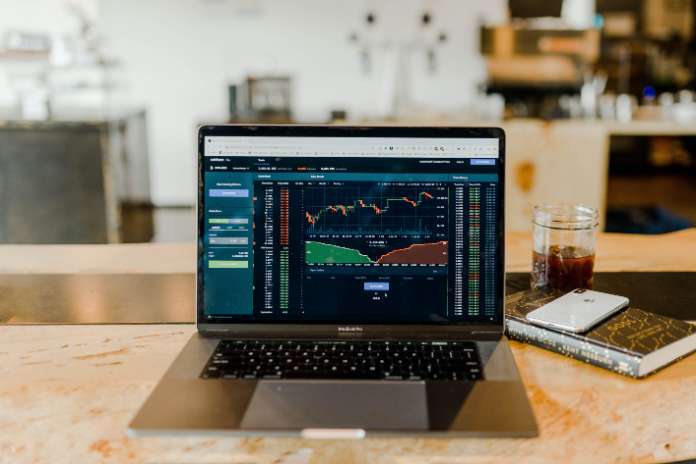Bitcoin Upside Potential Linked to U.S. Dollar Trends
This post was originally published on this site

A prominent crypto analyst suggests that a key factor may drive the next big bull run for Bitcoin (BTC) and other digital assets. Jason Pizzino, a widely-followed crypto strategist, believes that shifts in the U.S. Dollar Index (DXY) could significantly influence Bitcoin upside potential and broader crypto market movements.
In a recent video update to his 334,000 YouTube subscribers, Pizzino attributed the latest Bitcoin price drop to a resurgence of strength in the U.S. dollar. This connection highlights the critical interplay between traditional fiat currencies and digital assets, providing insights into what might trigger further upside potential for Bitcoin and other cryptocurrencies.
Bitcoin’s Price Pressure and U.S. Dollar Trends
The recent Bitcoin downturn was largely influenced by the U.S. dollar breaking out of its slump. According to Pizzino, the value of BTC often correlates inversely with the DXY, which measures the dollar’s strength against a basket of other major currencies. As the DXY finds its footing, Bitcoin tends to face downward pressure.
“Bitcoin also dropped for a few days but then found its peak when the U.S. dollar found its low,” Pizzino explained. He pointed out that as the DXY started to rebound from its downtrend, BTC experienced a parallel decline, at least in the short term. This suggests that BTC’s recent fluctuations are closely tied to the movements in the U.S. dollar, and this relationship may continue to shape Bitcoin upside potential in the near future.
U.S. Dollar Index: A Key Indicator for Bitcoin’s Upside Potential
The DXY currently sits at 101.97, and Pizzino argues that traders should closely monitor its movements, as a rejection near key levels could trigger a notable bull run for Bitcoin and other digital assets. Specifically, he identifies the resistance zone between 101.8 and 102.3 as crucial points to watch. Should the DXY face a rejection around these levels, it could pave the way for Bitcoin upside potential, sparking renewed investor interest and increased trading activity across the crypto market.
“I think [the DXY has] got a little bit more upside here… Now we come up to test around the 101.8 top, 102 is another psychological level, and then a few of these swing bottoms that came in around that 102.3,” Pizzino noted. “Quite a lot of resistance overhead… Keep a look out in case we get a rejection [around 101.8 to 102.3] which then could bring on further upside for Bitcoin and cryptos.”
This analysis underscores the importance of the U.S. dollar’s strength in the context of the crypto market. As digital assets often serve as a hedge against fiat currency movements, any significant shift in the dollar’s value may directly impact Bitcoin and other cryptocurrencies.
How Bitcoin Upside Potential Could Affect Broader Markets
Pizzino also speculates that Bitcoin’s upside potential, if triggered by a DXY rejection, may extend to the stock market as well. The close connection between cryptocurrencies and traditional financial assets means that a crypto bull run could signal broader market optimism, particularly as the U.S. approaches the upcoming election season. Investors looking for opportunities in digital assets will need to consider how shifts in macroeconomic trends, particularly those related to the U.S. dollar, could impact both crypto and stock markets.
Bitcoin is currently trading at $60,607, reflecting a 2.48% decrease over the last 24 hours. Despite this recent dip, many analysts remain bullish on its long-term prospects, particularly if the DXY demonstrates resistance and ultimately weakens. A drop in the dollar’s strength would likely spur increased demand for alternative assets like BTC, which have historically benefited from a weaker fiat environment.
What to Watch: Signals for Bitcoin Upside Potential
The potential for a significant Bitcoin upswing largely depends on the DXY’s behavior in the coming days and weeks. Traders and investors should keep a close watch on the DXY’s movement, particularly around the 101.8 to 102.3 resistance range, as a failure to break through these levels could be a catalyst for renewed momentum in the crypto market.
Additionally, the broader global economic landscape, including inflation rates, interest rates, and geopolitical developments, will play a critical role in shaping Bitcoin upside potential. As the world shifts toward more digital finance solutions, Bitcoin’s position as a leading digital asset makes it a key indicator for both the crypto space and broader financial markets.
In conclusion, Bitcoin upside potential is closely linked to U.S. dollar dynamics, and traders should keep an eye on the DXY to anticipate future movements in the crypto market. As macroeconomic factors and market sentiment evolve, these insights will be essential for navigating the ever-changing landscape of digital assets and their potential for growth.
Featured Image: Freepik




















